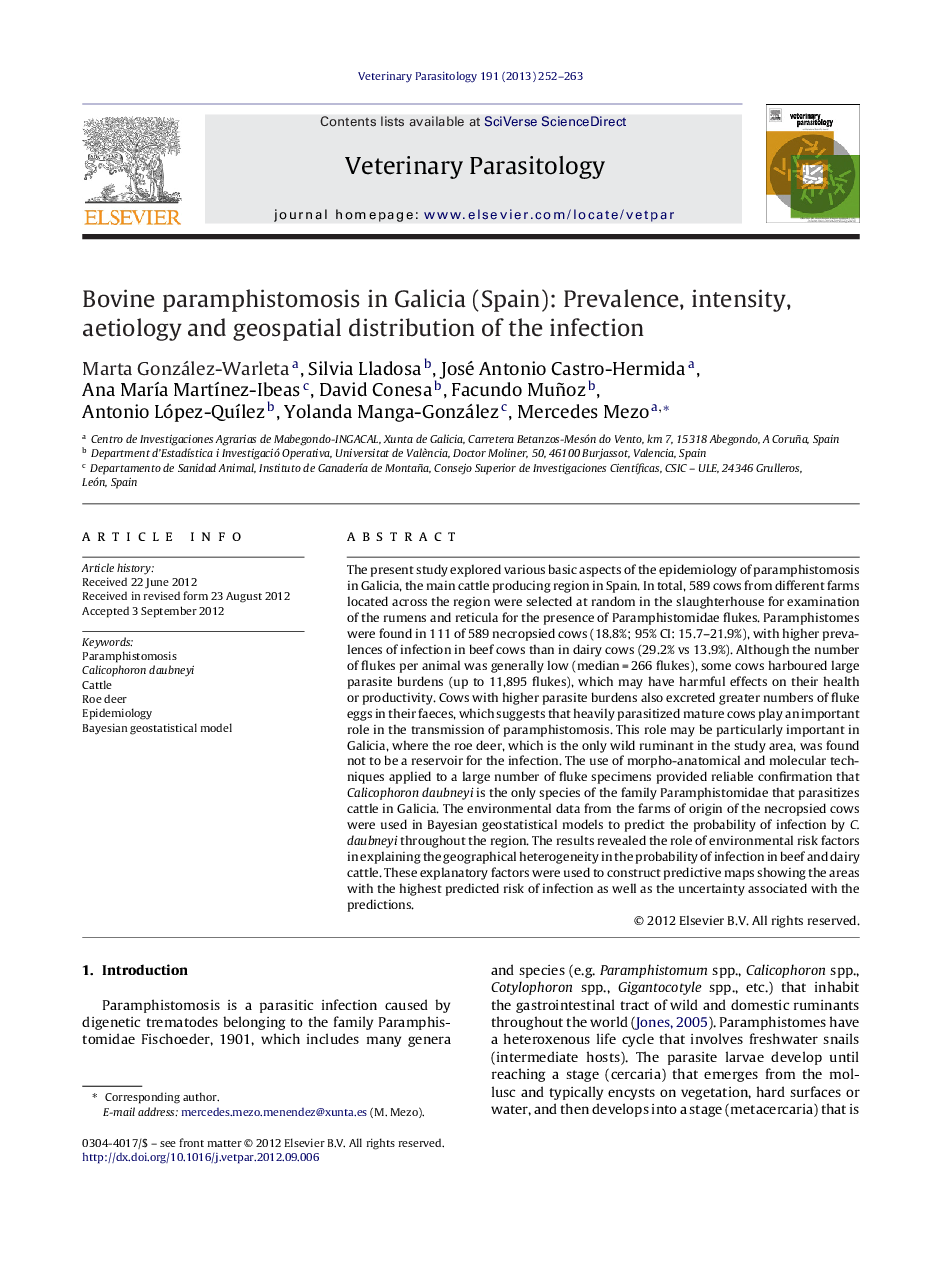| کد مقاله | کد نشریه | سال انتشار | مقاله انگلیسی | نسخه تمام متن |
|---|---|---|---|---|
| 5804519 | 1555705 | 2013 | 12 صفحه PDF | دانلود رایگان |
The present study explored various basic aspects of the epidemiology of paramphistomosis in Galicia, the main cattle producing region in Spain. In total, 589 cows from different farms located across the region were selected at random in the slaughterhouse for examination of the rumens and reticula for the presence of Paramphistomidae flukes. Paramphistomes were found in 111 of 589 necropsied cows (18.8%; 95% CI: 15.7-21.9%), with higher prevalences of infection in beef cows than in dairy cows (29.2% vs 13.9%). Although the number of flukes per animal was generally low (median = 266 flukes), some cows harboured large parasite burdens (up to 11,895 flukes), which may have harmful effects on their health or productivity. Cows with higher parasite burdens also excreted greater numbers of fluke eggs in their faeces, which suggests that heavily parasitized mature cows play an important role in the transmission of paramphistomosis. This role may be particularly important in Galicia, where the roe deer, which is the only wild ruminant in the study area, was found not to be a reservoir for the infection. The use of morpho-anatomical and molecular techniques applied to a large number of fluke specimens provided reliable confirmation that Calicophoron daubneyi is the only species of the family Paramphistomidae that parasitizes cattle in Galicia. The environmental data from the farms of origin of the necropsied cows were used in Bayesian geostatistical models to predict the probability of infection by C. daubneyi throughout the region. The results revealed the role of environmental risk factors in explaining the geographical heterogeneity in the probability of infection in beef and dairy cattle. These explanatory factors were used to construct predictive maps showing the areas with the highest predicted risk of infection as well as the uncertainty associated with the predictions.
Journal: Veterinary Parasitology - Volume 191, Issues 3â4, 31 January 2013, Pages 252-263
